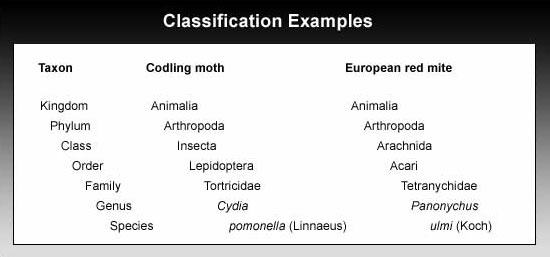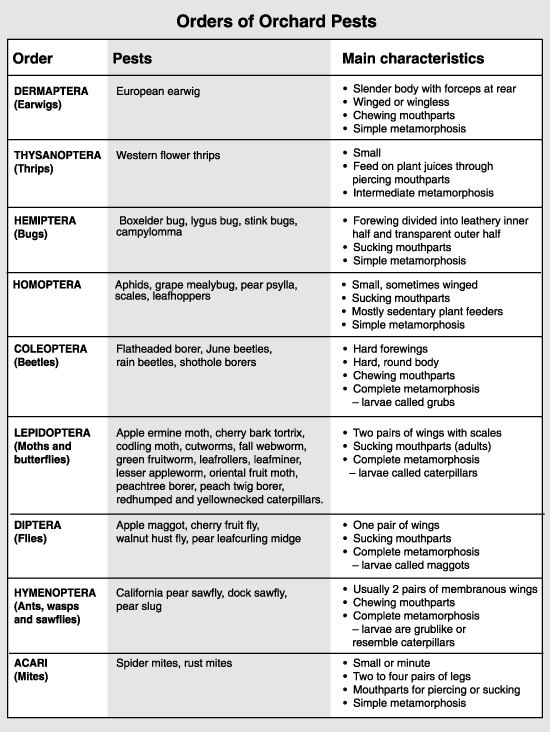Insects and mites are arthropods. The name arthropod is derived from the Greek words for “jointed” and “foot”. Insects are one class of arthropods (Insecta), and mites and spiders another (Arachnida). Each group, called a taxon (plural, taxa) is subdivided into smaller, more closely related groups. The base unit of classification is a single species. The table gives the classifications of two important tree fruit pests, codling moth (an insect) and European red mite (a mite). The name after the species name is the person who first described that species, or the author. If the name is in parentheses, it means the scientific name has been changed since the species was first described. By convention, the genus and species (the scientific name or Latin binomial) are italicized.
Entomologists often refer to a taxon (usually a family) of insects collectively by dropping the ending -idae and adding -id. So, insects in the family Tortricidae are referred to as tortricids, and the Tetranychidae are called the tetranychids. Similarly, entomologists sometimes refer to a group of related families with a taxon called a superfamily. The name is made by dropping the -idae ending of one of the typical families in the group and adding -oidea. The wasp families Eulophidae, Encyrtidae, Mymaridae, Trichogrammatidae and Chalcididae are in the superfamily Chalcidoidea. A list of common and scientific names of pests found in orchards in the Pacific Northwest is available. Pests and their main characteristics are listed by order in the following chart. Common names of insects can be confusing. For instance, sawflies and snakeflies are not flies (Diptera) at all, but belong to the orders Hymenoptera and Neuroptera, respectively. As a rule of thumb, if the word “fly” or “bug” is kept as a separate word in the name, then the insect belongs to the order indicated (e.g., a syrphid fly is in the order Diptera and a stink bug in the order Hemiptera). However, if the word is used in a compound term (sawfly, mealybug), then it probably belongs to a different order than expected.


